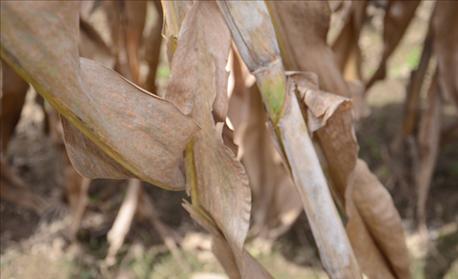
Stalk rots were rampant in many cornfields this fall. Dave Nanda, a plant breeder and crops consultant for Seed Consultants Inc., sponsor of Crop Watch ’16, says that many fields were set up for stalk rot because they were stressed by foliar diseases, including gray leaf spot and southern rust.
One of the diseases that Nanda encountered this fall was stalk rot, primarily anthracnose stalk rot. There is also a leaf blight phase of anthracnose, but it’s caused by a different organism and is usually not as prevalent as other corn leaf diseases, he says.
Here are three ways to identify stalk rots.
Step 1. Notice plants that have fallen over prematurely, especially at the base of the plant.

FALLEN STALKS: Cornstalks that already fell over at ground level are a good indicator of stalk rot. Note the blackish specks on this stalk.
If a stalk collapsed and let the entire plant fall, stalk rot is a prime candidate for being the cause, Nanda says. If there are black specks on the stalk, it’s likely anthracnose stalk rot invading the plant.
Step 2. Notice discoloration of stalks. Even if stalks are standing, the outer rind may be discolored either by black specks and dark colors, indicating anthracnose stalk rots, or by a whitish, slick appearance, which is also an indication of stalk rot. Splitting the stalk and examining the pith may determine which stalk rot is at work.

VISUAL INSPECTION: Looking at the stalks for blackish specks or white mold on the outer surface is one way to determine if stalk rot is at work.
Step 3. Look inside the stalk at the pith for clues. If the pith inside the stalk is healthy, it will still be white, even near harvest. If you split it open and find discoloration, it is likely due to stalk rot, Nanda says. Dark or black discoloration inside the pith is often a sign of anthracnose stalk rot, he notes. Once you suspect stalk rot is at work from finding down stalks or because you see visual symptoms, split the stalk and examine the pith, starting at the nodes.
About the Author(s)
You May Also Like




